Last Updated on December 29, 2025 by Emma Fajcz | Published: March 2, 2017
In Seville, daily life unfolds outdoors. Café terraces buzz with mid-morning coffee drinkers, locals linger over long lunches in the shade, and evenings often turn into relaxed bar-hopping through historic streets. This easygoing rhythm makes the city one of Spain’s best places to eat well! If you’re wondering what to eat in Seville, the answer lies in these favorite dishes that locals have enjoyed for generations. From soups to tapas, these authentic Spanish foods in Seville are worth trying on your next visit!
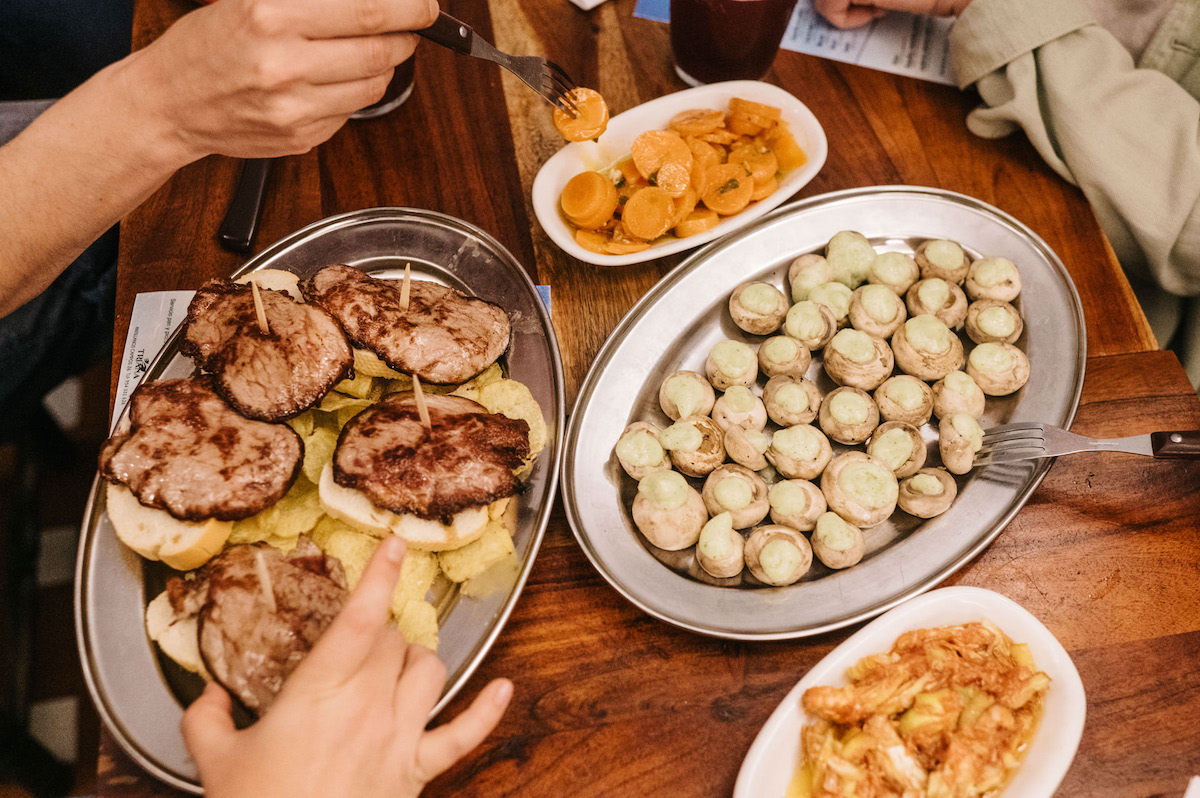
Secreto Ibérico & Presa Ibérica
Our first suggestion is really a 2 for 1, as we have to begin with the crème de la crème: Iberian pork. While you’ll find a lot of it here in Spain, there are 2 standout pork dishes that Seville does especially well.
Secreto ibérico is the most melt-in-your-mouth cut of pork that exists, and one of Spain’s best-kept “secrets” (pardon the pun). It’s a notoriously difficult cut of meat to get, but when cut and cooked correctly, it makes for an unforgettable bite.
It’s rivaled only by the equally delicious presa ibérica, a cut from near the top of the pork shoulder. No matter which option you choose while dining out, you won’t go wrong.
Insider Tip: Get our recommendations on where to buy and eat jamón ibérico in Seville so you don’t miss out on this iconic food while you’re visiting.
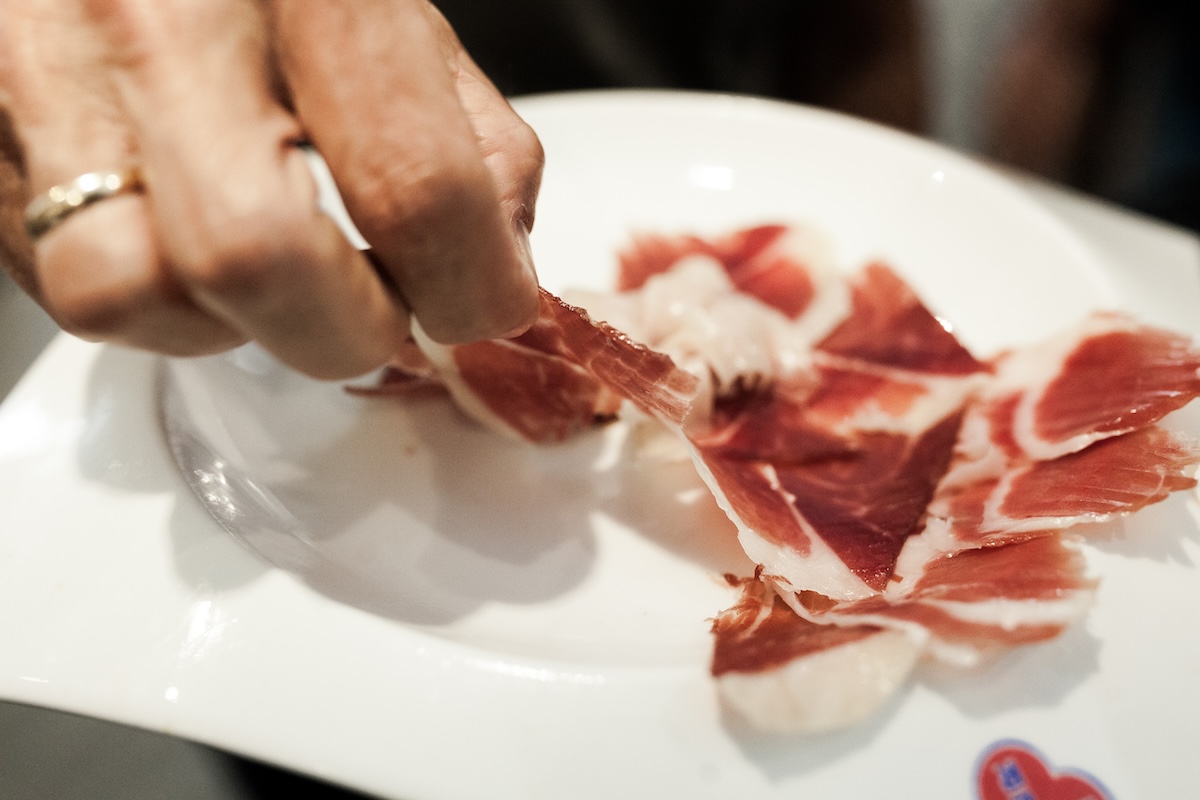
Carrillada de Cerdo
Pork cheek is one of Seville’s most traditional stewed meats, and that means it’s pretty easy to find in tapas bars around town. Usually cooked in a simple wine reduction, some cooks also add carrots, cloves, and garlic to the mix.
A good carrillada (sometimes also called carrillera) should be tender and full of flavor, and it’s best accompanied by a big glass of red wine. Carrillada is often served with homemade french fries—perfect for helping sop up all the sauce.
Insider Tip: Want to get the scoop on Spain’s small bites? Get all the info you need in our guide to tapas and pintxos in Spain!
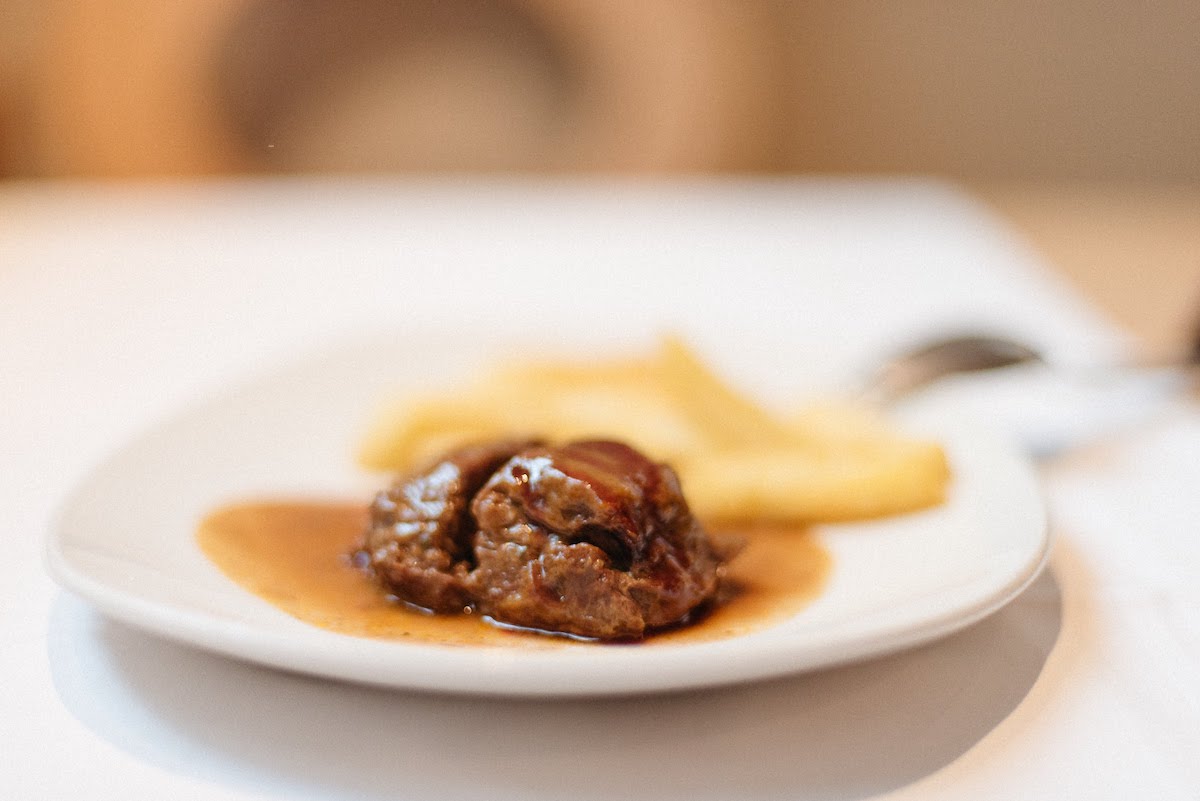
Vino de Naranja
Okay, so this one is a drink—but we couldn’t not include it on our list of typical foods in Seville!
Vino de naranja, or orange wine, arrived in Seville in the early 20th century and has been a favorite among locals ever since. The drink is a dark-colored fortified wine that’s made even more delicious with the addition of bitter orange peels during the fermentation process. Orange wine is a speciality of Seville’s cuisine that every foodie needs to try!
If you’re curious about Seville oranges, get all your questions answered in our history lesson on Seville’s orange tree-lined streets.
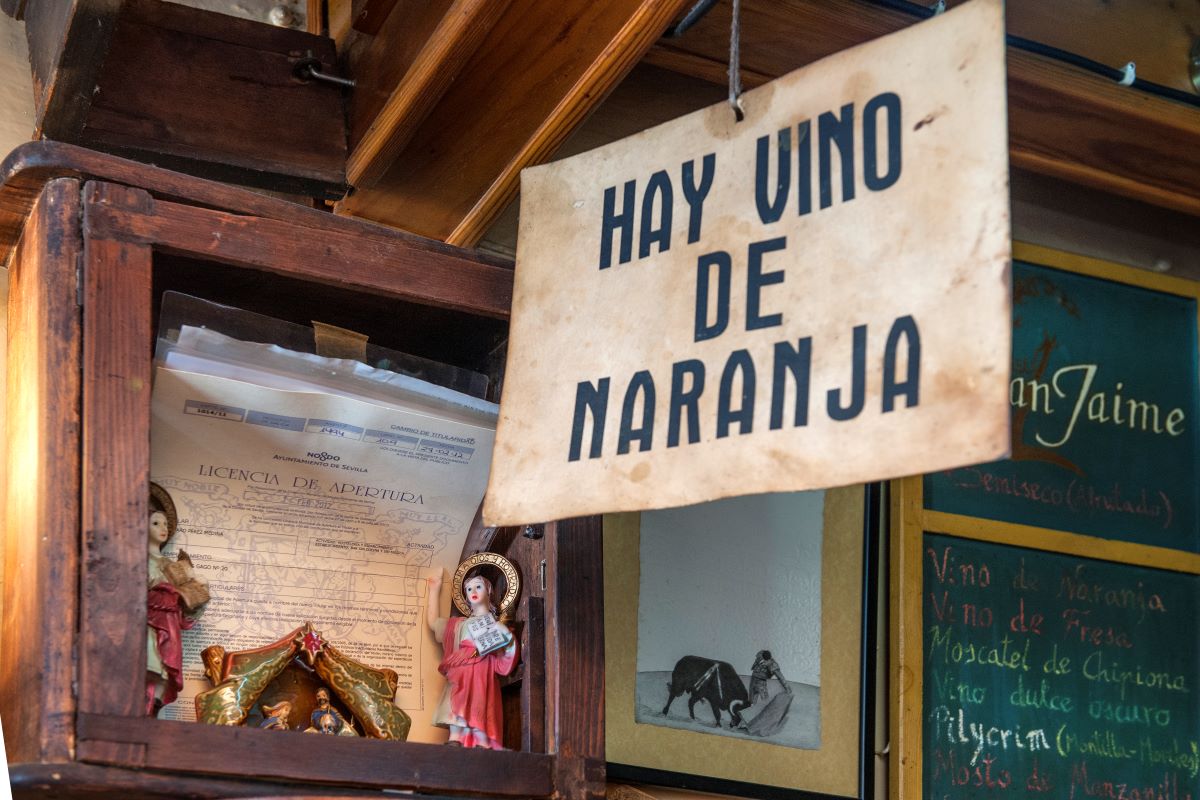
Zanahorias Aliñadas
Only a place like Andalusia could take the humble carrot and elevate it to such delicious heights. Zanahorias aliñadas (or “aliñás” in the local dialect) are carrots that are parboiled to al dente perfection and then left to marinate in a Moorish-inspired spice blend and vinegar. The result: the most flavorful carrots you’ll ever try, and a perfectly sevillano way to get your daily fix of veggies.
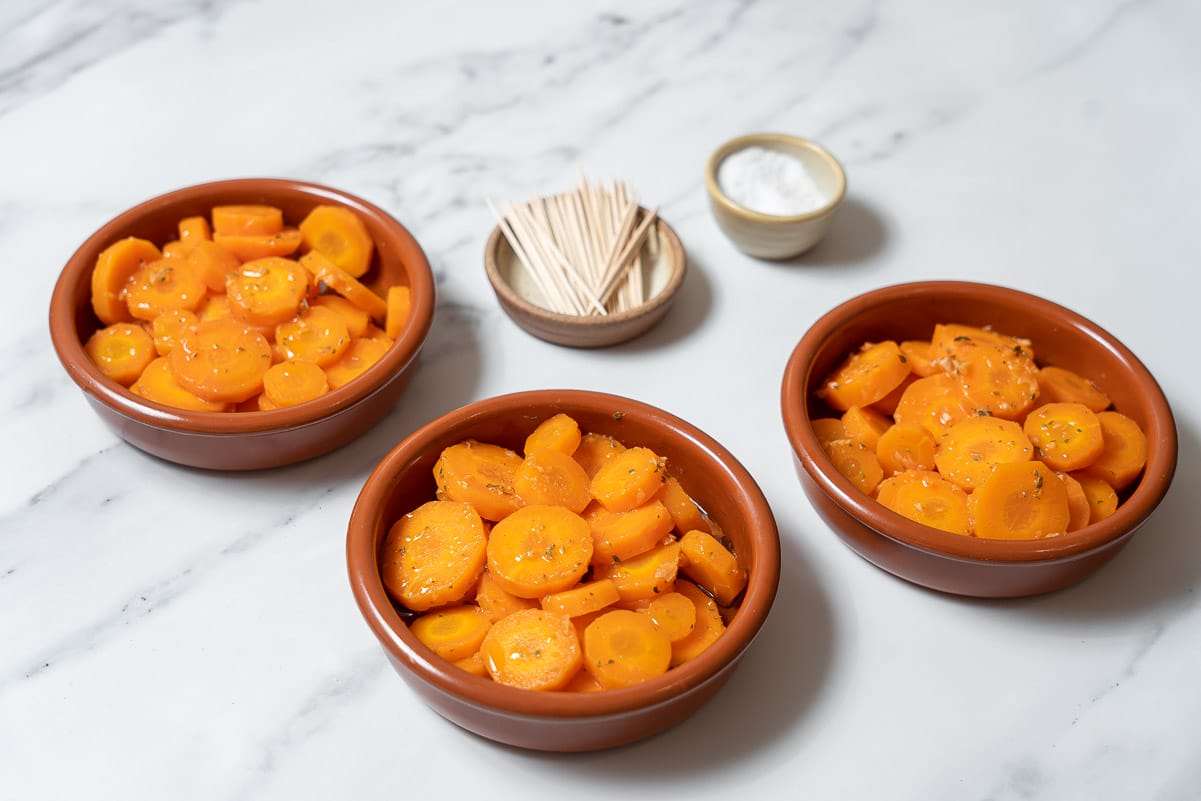
Espinacas Con Garbanzos
There may not be many veggie-friendly tapas on this list, but the traditional combination of spinach and chickpeas had to make the cut. Espinacas con garbanzos has roots in Seville’s Moorish and Jewish history, and is still popular in today’s tapas bars, where it’s often served with a picatoste (a large homemade crouton).
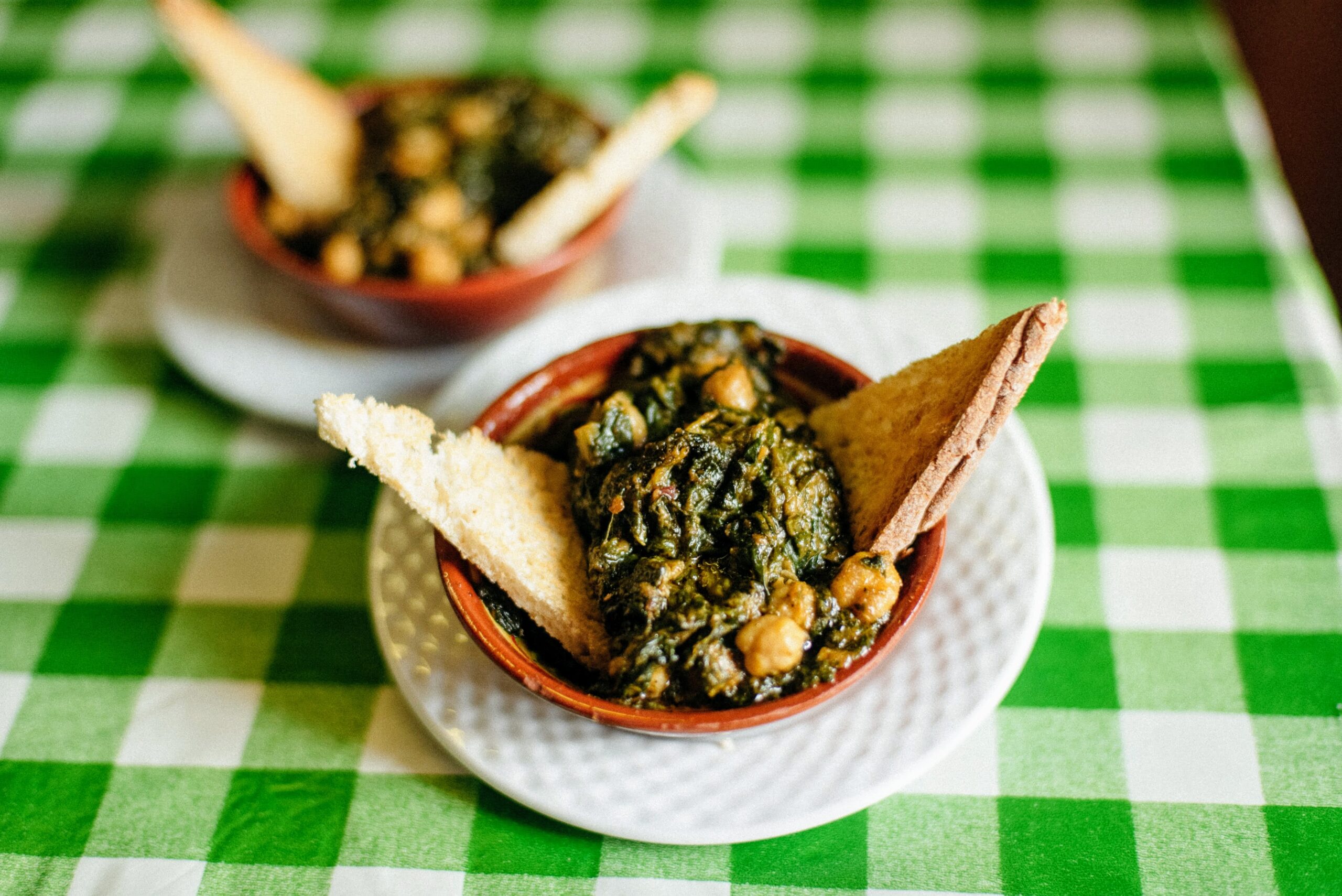
Montadito de Pringá
If you haven’t noticed, typical foods in Seville tend to come in one of two forms: pork and sandwiches. In the case of the montadito de pringá, you get both.
The star of the show here is glorious pringá—the meaty leftovers of Seville’s delicious puchero stew (more on that later), all mashed up and perfectly combined. The versions vary but generally include chicken, blood sausage, and chorizo.
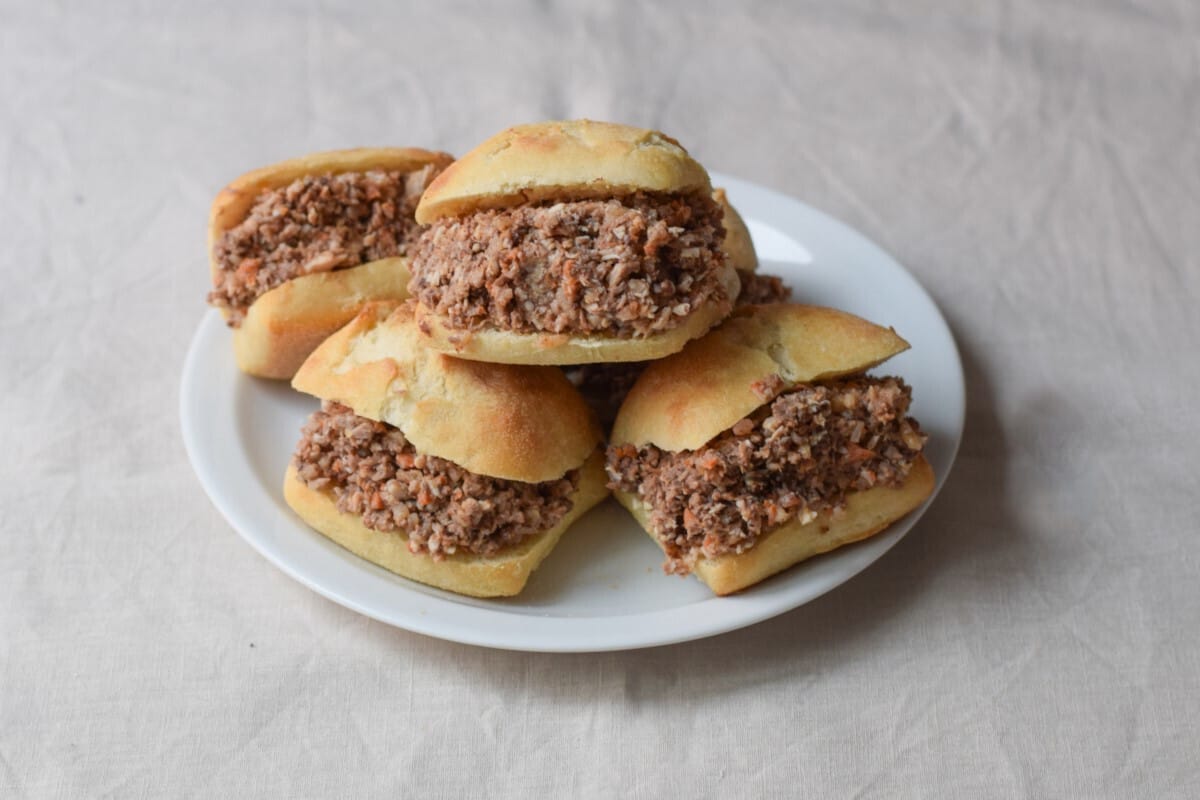
Serranito
And now, back to the pork. We can’t talk about typical foods in Seville without mentioning the serranito, the city’s signature sandwich. Seared pork loin is topped with salty serrano ham, a slice of tomato and a grilled green pepper. Stuff it all into a crusty homemade baguette, and you’ve got yourself a serranito.
Local Tip: If you don’t eat pork, don’t worry—many bars also offer a chicken version, too! Just be sure to specify that you still need it sin jamón (without ham).
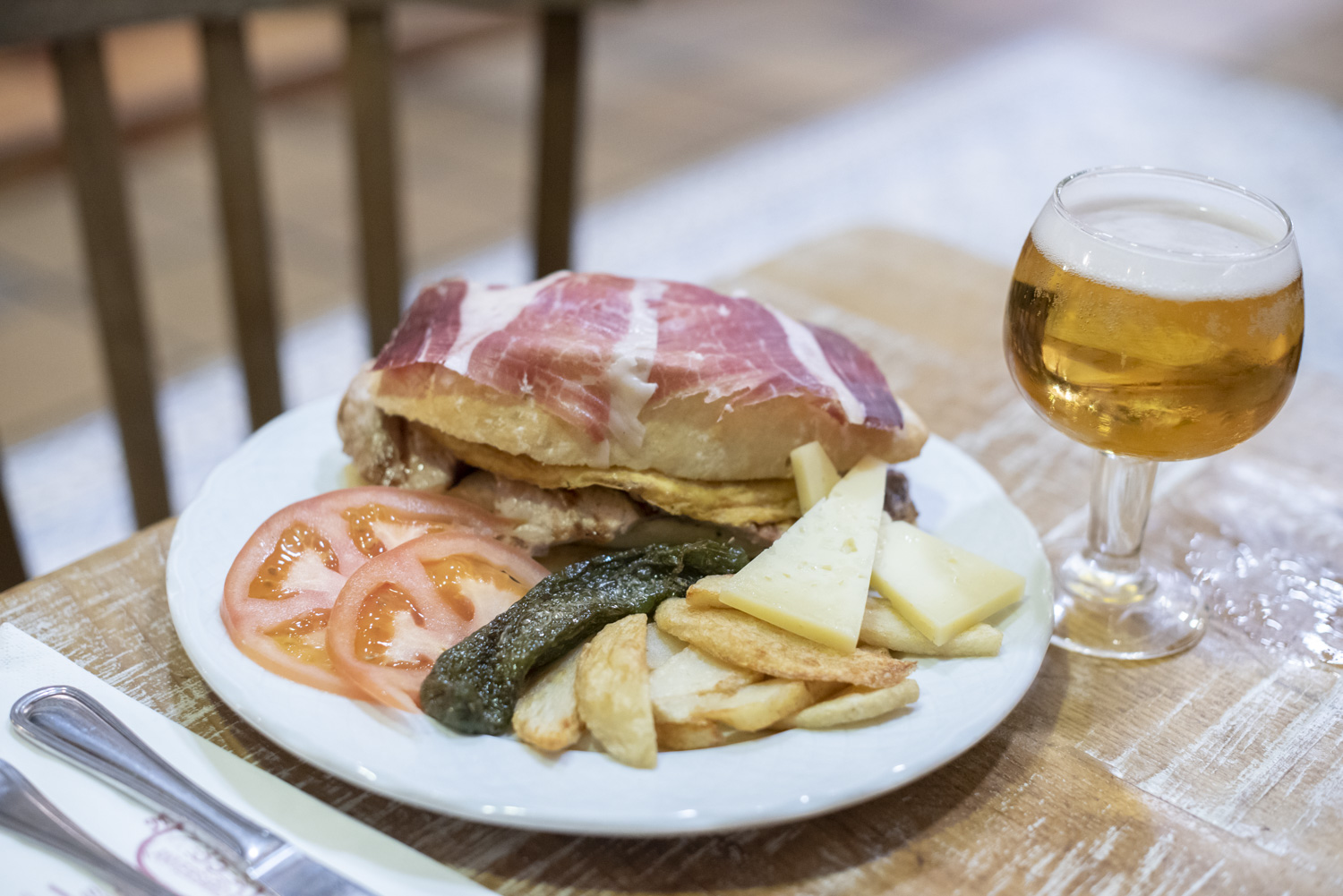
Solomillo Al Whisky
The origins of Seville’s popular whiskey sauce are a bit confusing. Nobody is quite sure how it originated before it started popping up on bar menus throughout Seville in the 1970s.
Regardless, the sauce has evolved to one of the city’s most famous. Whiskey, garlic, and olive oil combine to create one of the best glazes for grilled pork loin ever invented. This dish is an absolute must-try when visiting Seville.
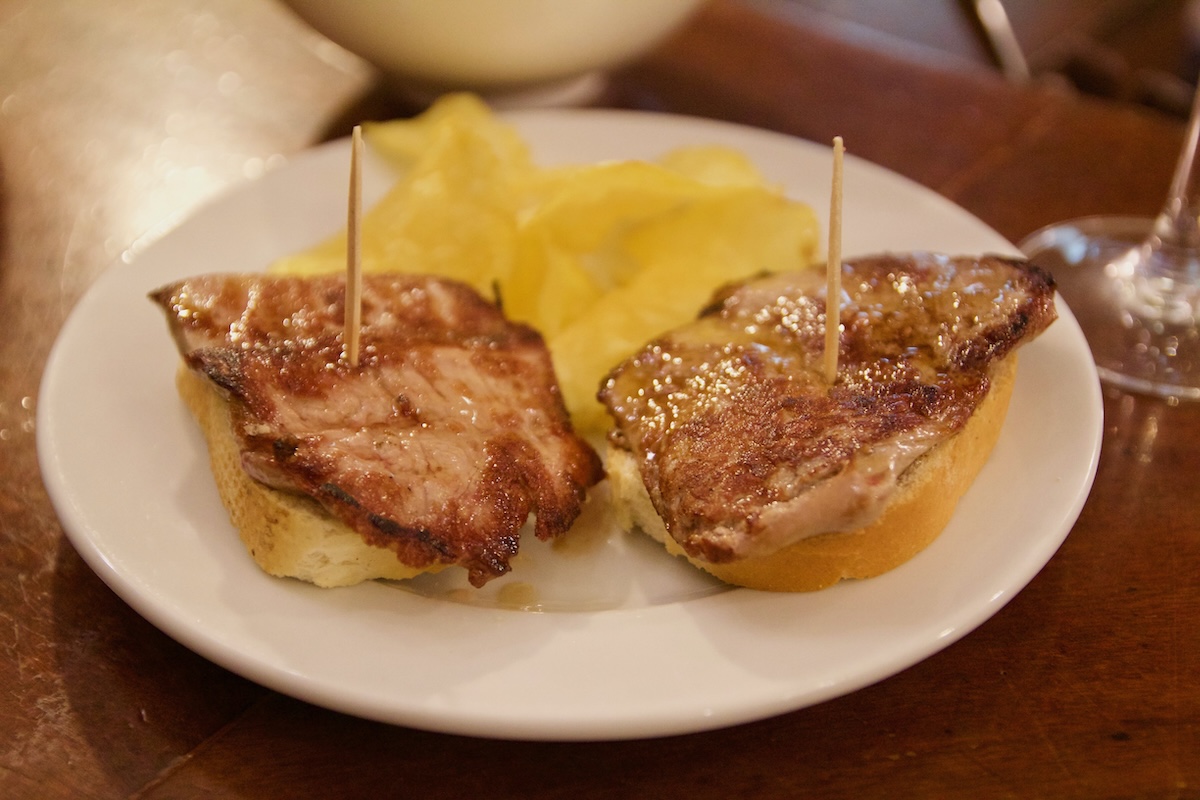
Cazón en Adobo
Seville sits just an hour away from the Atlantic Ocean, so it’s no surprise that locals love seafood, too. And there’s no better way to enjoy it than cazón en adobo.
This local favorite consists of sand shark in a Moorish marinade of cumin, oregano, vinegar and lemon. Lightly fried and served to order, cazón en adobo is proof that food doesn’t need to be fancy in order to be memorable. If you want to try it for yourself, we’ll take you to our favorite freiduría in the city on our Ultimate Seville Food Tour!
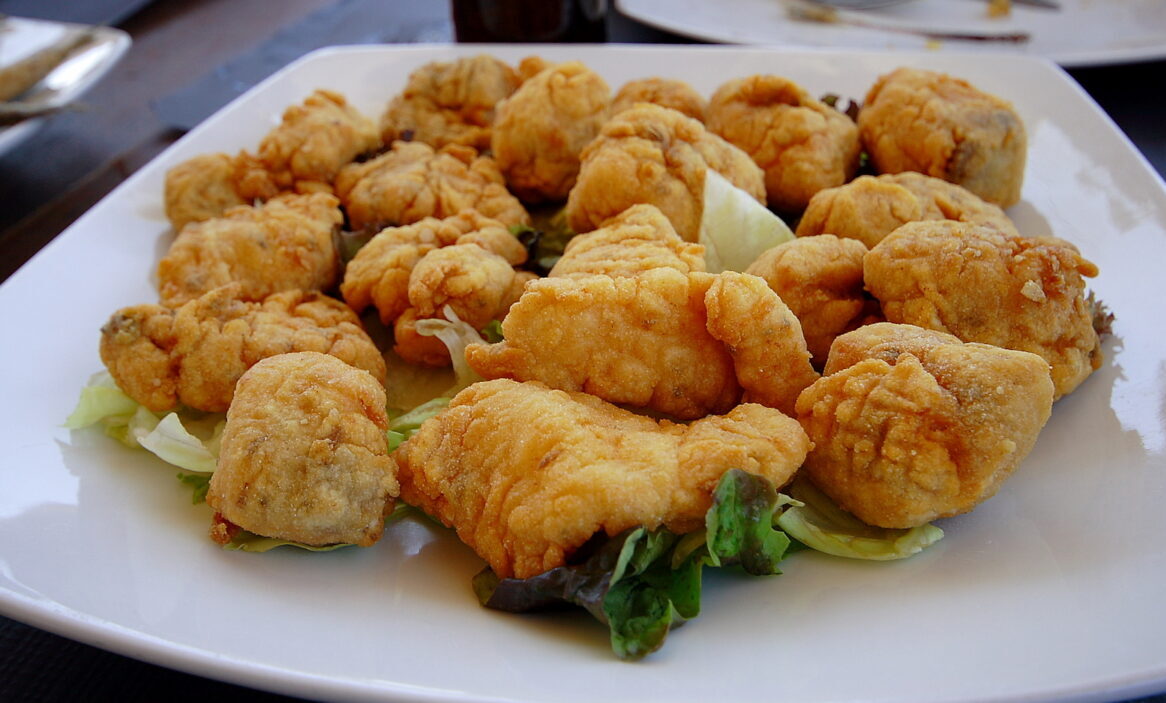
Puchero
Believe it or not, it does get cold come wintertime in southern Spain. And when it does, there’s nothing we love more than puchero.
Puchero is a hearty stew made with chicken, pork, vegetables, chickpeas, noodles, and so many other good things. We like to think of it as a sort of cure-all for any wintertime ailment—whether you’re under the weather, tired, or just need a pick-me-up, you can’t go wrong with puchero.
As a bonus, you can use the leftovers from your puchero to make the pringá mentioned above. It’s win-win!
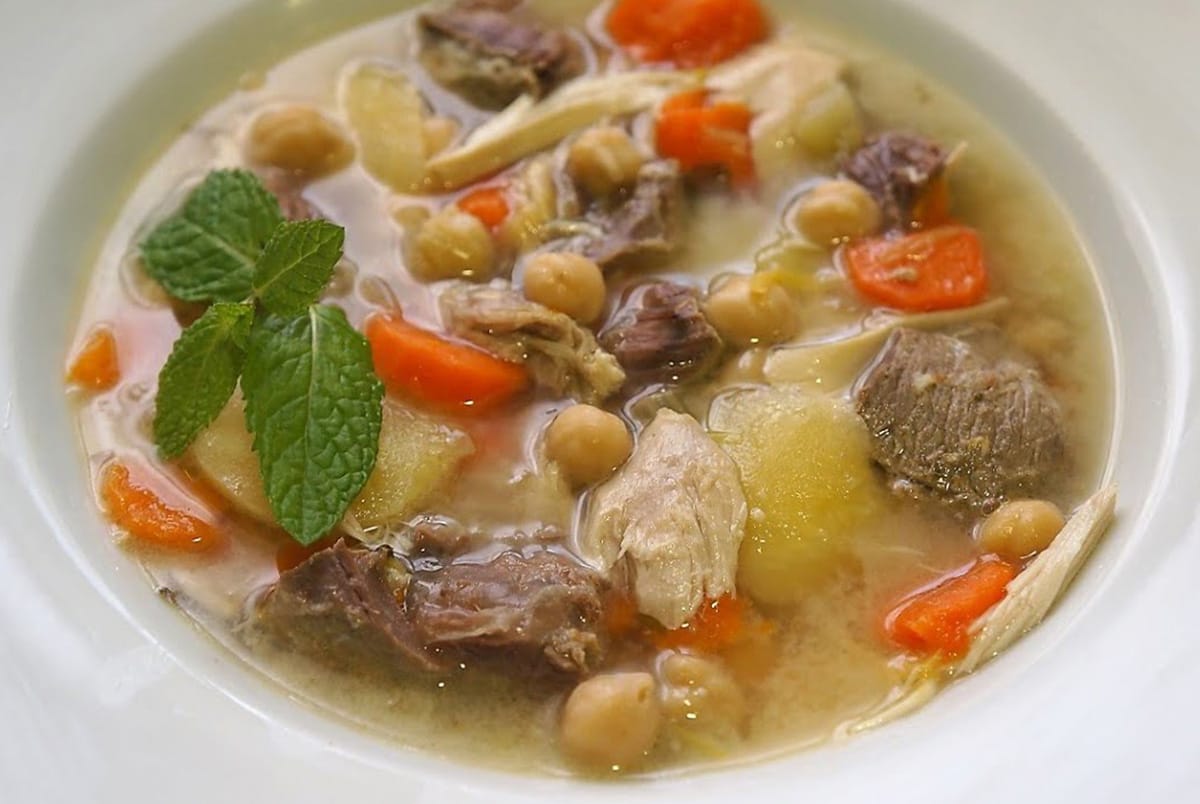
Salmorejo
Lots of people have heard of gazpacho, but if you haven’t tried salmorejo, you’re missing out.
Thicker and creamier than gazpacho, salmorejo also eschews the diverse array of vegetables present in the former and makes the tomato the star of the show. Despite its rich texture, the soup itself is actually completely vegan. It gets its creaminess from a mixture of bread and extra virgin olive oil.
Traditionally, bars in Andalusia serve salmorejo topped with bits of cured ham and hard-boiled egg. It’s as simple as it gets, but nothing hits the spot more on a sweltering Seville summer day!
A drizzle of olive oil adds the perfect finishing touch to dishes like salmorejo.
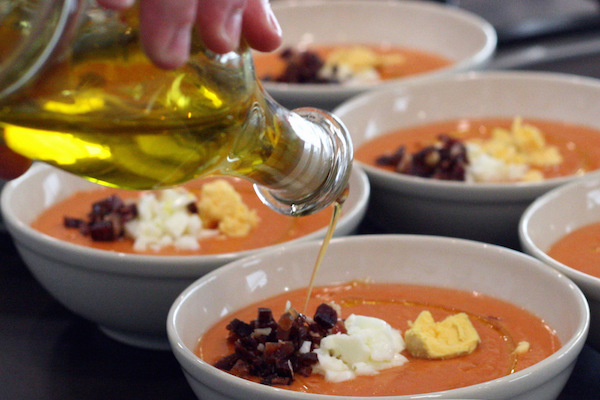
Boiled Shrimp (Gambas Cocidas)
With the sunny Spanish coast just over an hour away, Seville has access to some of the best seafood in Spain. Case in point: fresh white shrimp from Huelva, which, when boiled, make for an absolutely perfect seafood tapa. Boiled shrimp may not sound that exciting, but when done right, they’re one of the best things you’ll eat in southern Spain.
Shrimp in Spain are traditionally served with the shells on, so you’ll have to peel them yourself before eating. But that little bit of effort is well worth it when you bite into the succulent, flavorful shrimp that needs nothing more than a sprinkle of sea salt to truly shine.
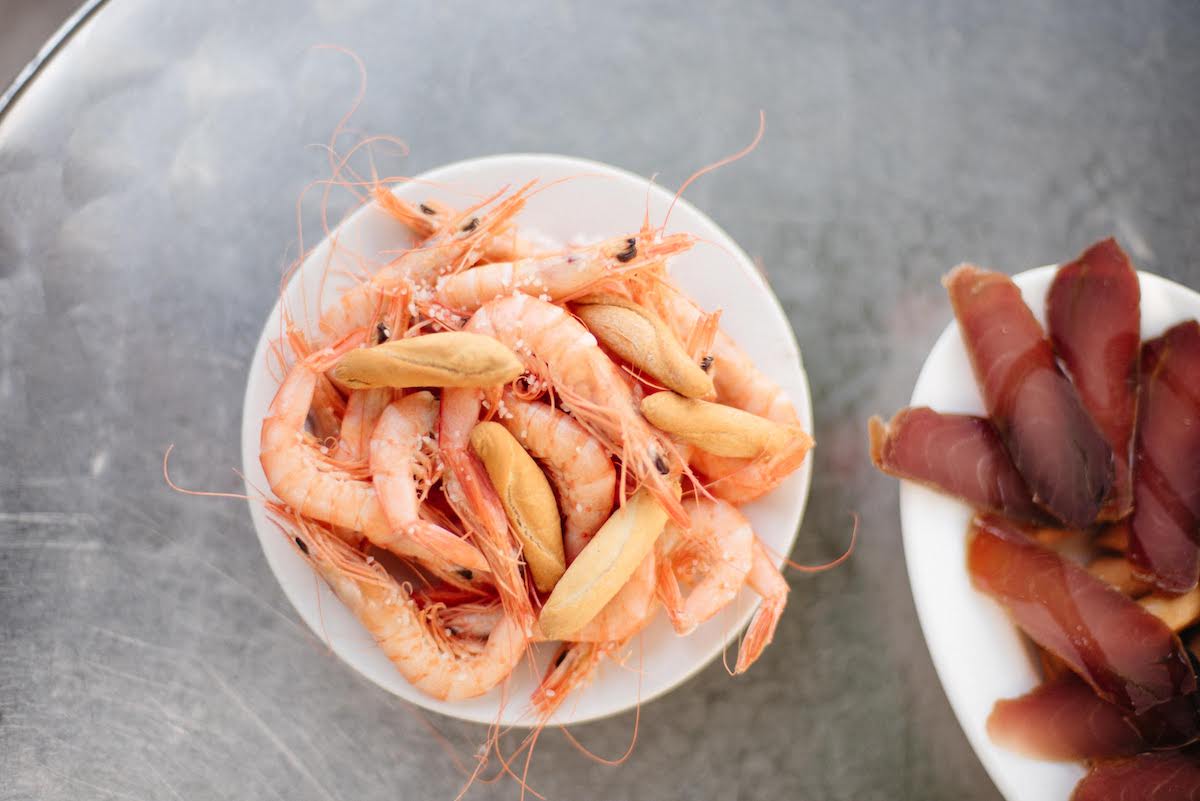
Almejas a la Marinera
Though the name might remind you of Italian-American marinara sauce, the term marinera in almejas a la marinera simply means “related to the sea.” This traditional way of preparing clams developed on the coasts of Spain and is now especially popular in Andalusia.
Classic Spanish ingredients like dry sherry and smoky paprika come together beautifully to create a mouthwatering sauce for the clams. Some recipes are spicier than others thanks to the addition of fresh pepper, but any variation of this dish you try is sure to be excellent.
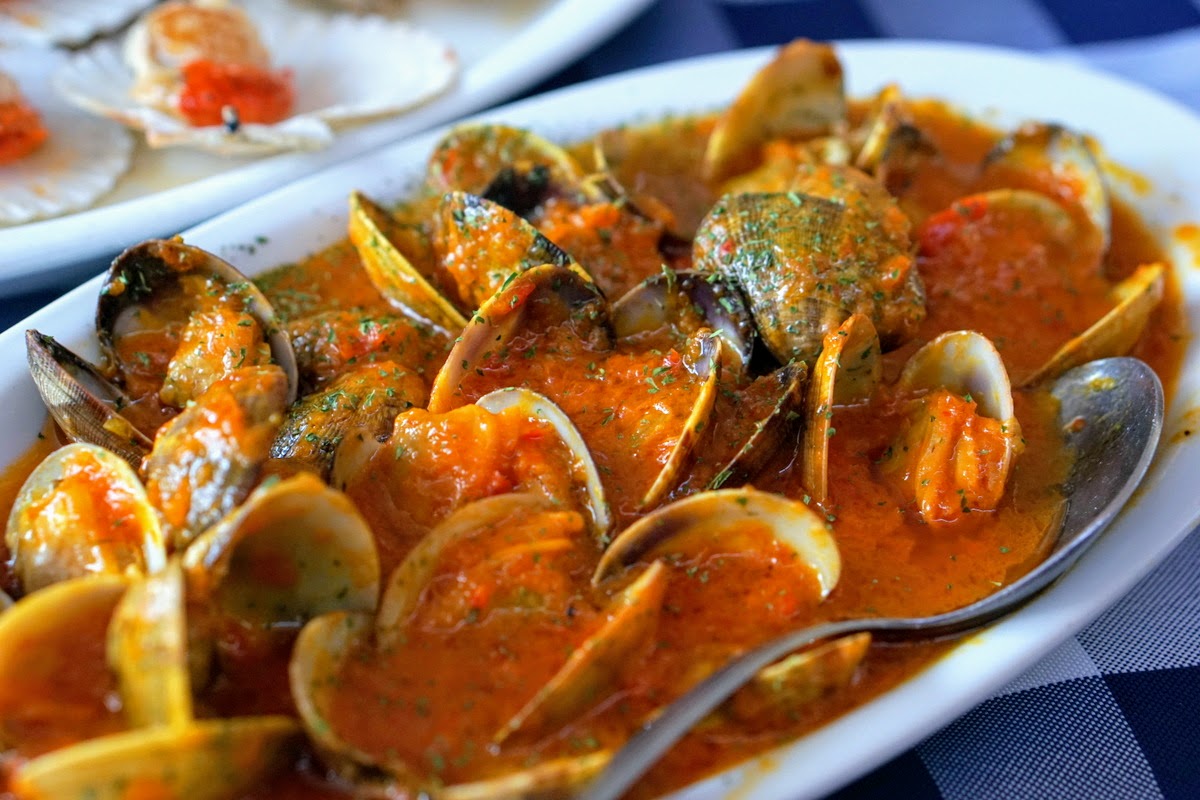
Ensaladilla Rusa
As the name implies, ensaladilla rusa (or “Russian salad”) isn’t Spanish in origin. But you’d be hard-pressed to find a bar in Spain that doesn’t have it.
This classic tapa brings together some veggies, seafood, and mayonnaise into one of the most refreshing things you can eat in Seville. Our favorite versions of ensaladilla rusa use homemade mayo and those white Huelvan shrimp we can’t get enough of.
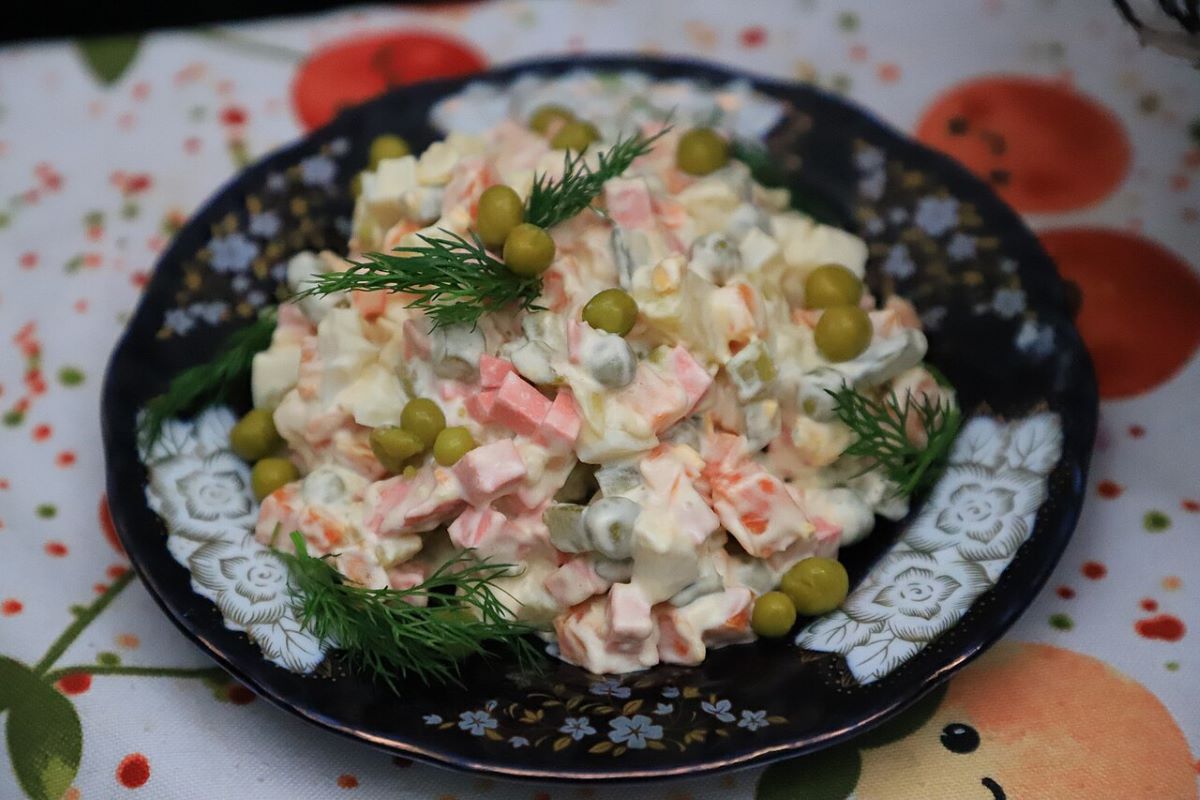
Rice with Pork
There’s so much more to Spanish rice than just paella. Although there are some great spots for paella in Seville, Spain’s most well-known dish is best enjoyed on its home turf of Valencia. But it’s not the only rice dish that’s popular in Spain!
In the area surrounding Seville, one popular rice dish is made with pork, known in Spanish as arroz con cerdo or arroz del campo (“country-style rice”). It’s traditionally cooked outdoors at country barbecues over an open flame, but no worries if you don’t have any Spanish friends to invite you to one. Many bars and restaurants serve rice at least once a week as a special, so keep an eye out for signs reading something along the lines of Hoy arroz (“Rice today”).
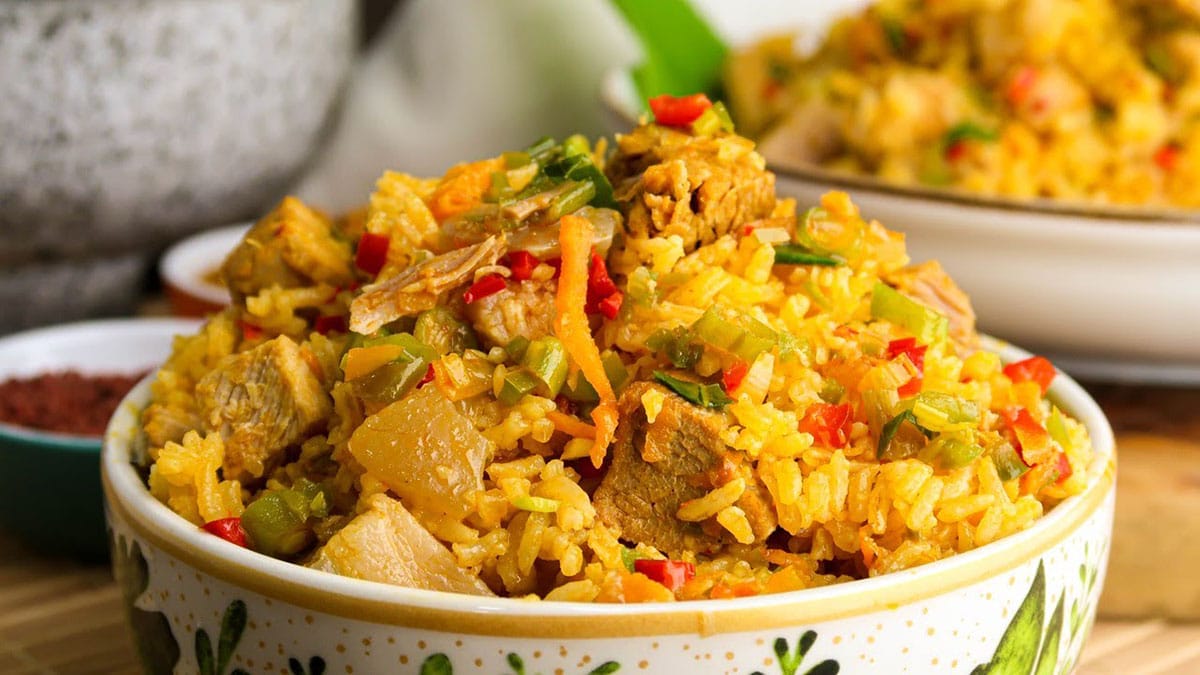
Lentil Soup with Chorizo
Spanish lentejas (lentils) are the ultimate winter comfort food. They’re delicious, easy to make, and warm you up like nothing else on a chilly day. Add in some excellent Spanish chorizo for a bit of heat and some protein, and you’ve lentejas con chorizo, one of the best typical foods in Seville, to enjoy all winter long.
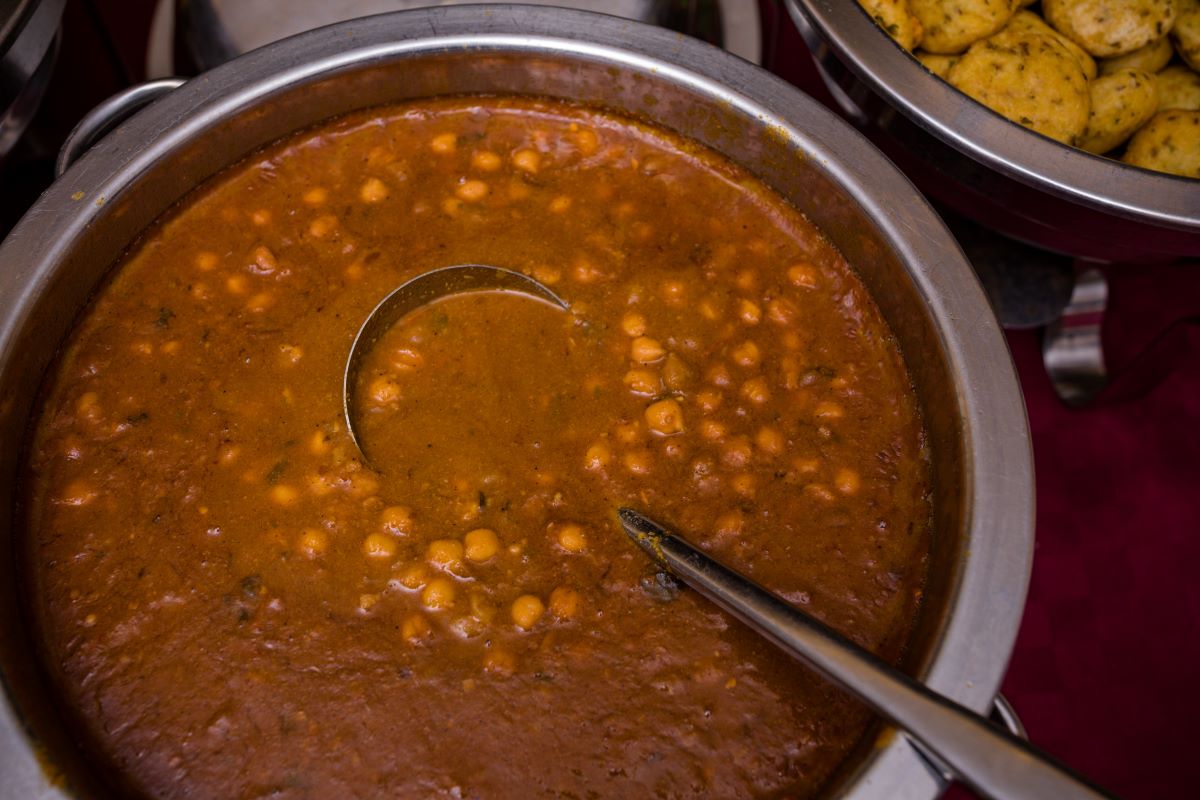
Chickpeas with Seafood
Another delicious addition to Andalusia’s wide repertoire of legume recipes is a simple stew of chickpeas with salt cod and shrimp. The secret here lies in making an excellent quality homemade shrimp or fish stock—it’s easier than it sounds, and really takes the dish to a whole other level.
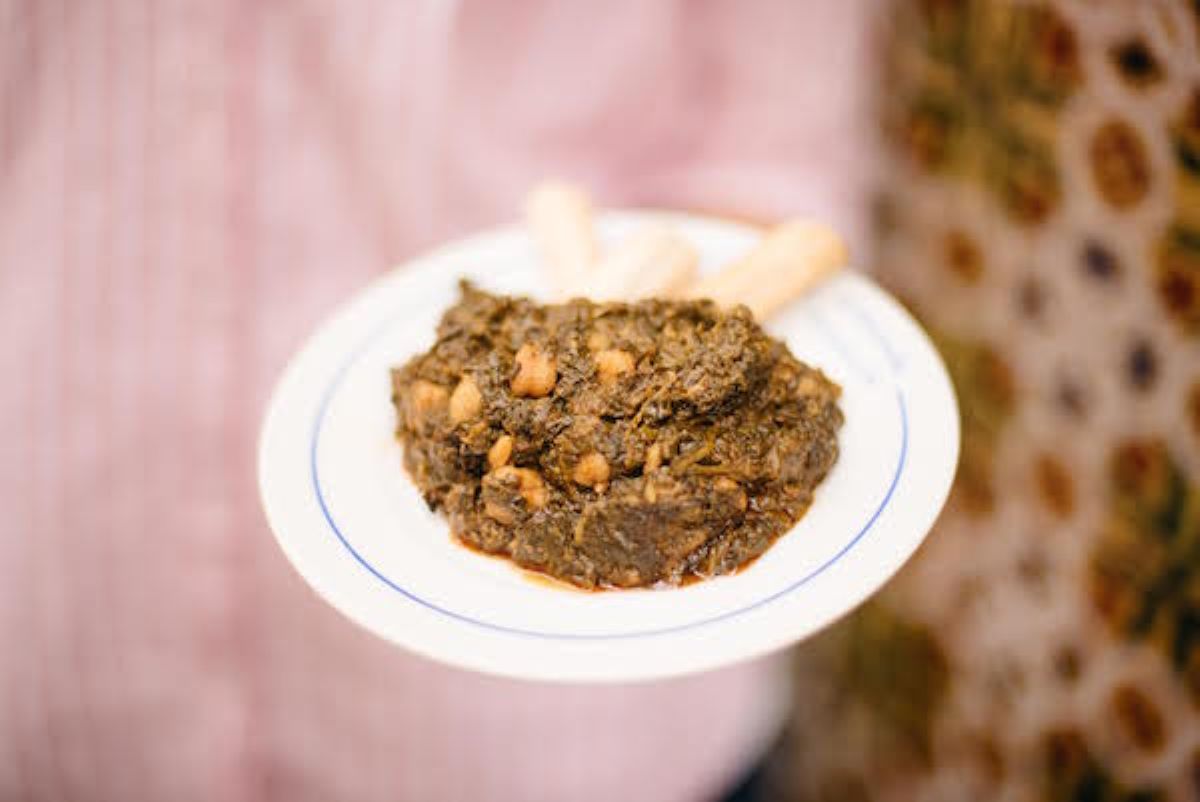
Torrijas
If you’ve got a sweet tooth, no worries—we’ve got you. Often likened to a Spanish-style twist on French toast, torrijas are traditionally made with stale bread that is soaked in beaten eggs before being deep fried. It’s all topped off with sugar syrup, honey, or sweetened milk.
In Seville, torrijas start popping up in pastry shops mainly around Semana Santa (Holy Week). However, many restaurants realize they make a fantastic dessert all year long—especially topped with ice cream!
Insider’s Tip: No matter what time of year you’re visiting, don’t miss our article on where to find the best torrijas in Seville.
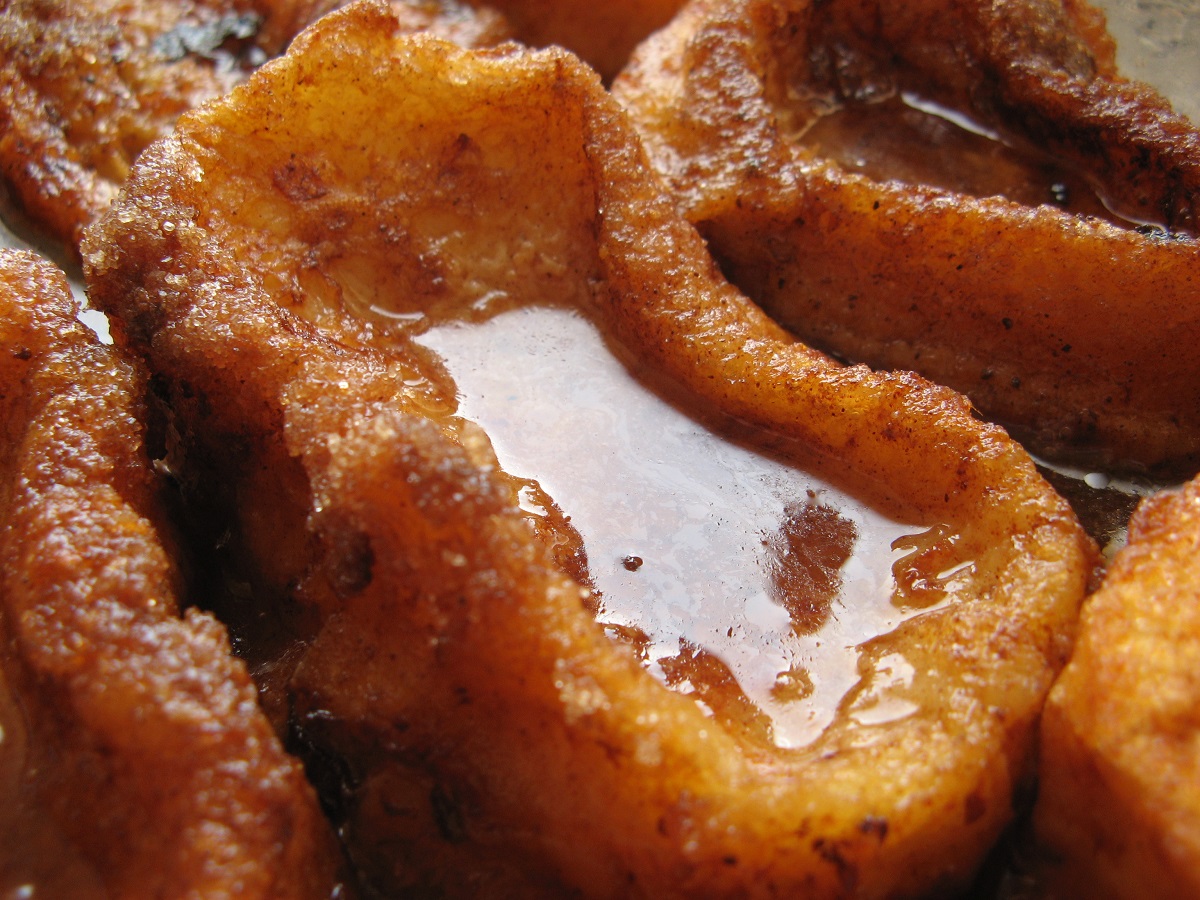
Roscos Fritos
Andalusian fried donuts coated in sugar? Yes, you read that right—and they’re even better than they sound.
Roscos fritos have long been associated with Holy Week in Seville, but today many families enjoy them during the winter holidays as well. They’re easy to make and especially perfect with a cup of strong coffee for merienda, or the traditional afternoon snack popular throughout Spain.

Want to try these tapas for yourself? Check out some of the oldest tapas bars in Seville to taste these favorite local dishes for yourself!
Want to Taste the Best Foods in Seville?
Craving a taste of all of Seville’s delicious dishes? Book a spot on our next Ultimate Seville Food Tour; it’s the best way to taste everything that the locals love to eat. One of our expert local guides will take you on a shopping trip at the food market, then take you to a beloved tapas bar for a bite and then grabbing a few sweet treats. Along the way, you’ll meet the proud families who have been perfecting their crafts for generations and get a sense of what it really means to call Seville home.

Featured Review: Ultimate Seville Food Tour
⭐⭐⭐⭐⭐ “We had an amazing experience in Seville with our tour guide Paula. As a family of four we had a great time visiting the restaurants and bars and really enjoyed learning about the cultural and cuisine history from Paula who was so kind and informative, she answered all our questions and gave us some great tips for the city. We had a vegetarian with us and felt very accommodated at every restaurant! Our favourites were the fried fish restaurant and Restaurante El Atún. Overall amazing tour of the city, we never would have seen these great places otherwise!”
– Holly on Tripadvisor
FAQs about What to Eat in Seville
Table of Contents
What is a typical breakfast in Seville, Spain?
A classic Sevillian breakfast includes tostada with tomato and olive oil, coffee, and fresh orange juice. Some cafés also serve churros in the morning.
Is Seville known for good tapas?
Yes. Seville is one of Spain’s top tapas cities, known for traditional bars, family recipes, and lively neighborhoods filled with local favorites.
What restaurants do Devour Tours typically visit?
Devour Seville tours visit family-run taverns, historic bars, and local eateries known for authentic Andalusian dishes and high-quality ingredients.
What are the best restaurants in Seville for traditional Andalusian food?
Top picks include El Rinconcillo, Eslava, Bodega Dos de Mayo, and La Azotea, all loved for classic Andalusian flavors.
What is the most famous food to try in Seville?
Try salmorejo, espinacas con garbanzos, rabo de toro, and fried fish. These dishes reflect the heart of Sevillian and Andalusian cuisine.









Has anyone tried the micro brew pub in Seville called Cervezas Taifa in Barrio Triana?
Yes
Hi! When i visit sevilla i always look @tizaybarra on instagram to know where to eat